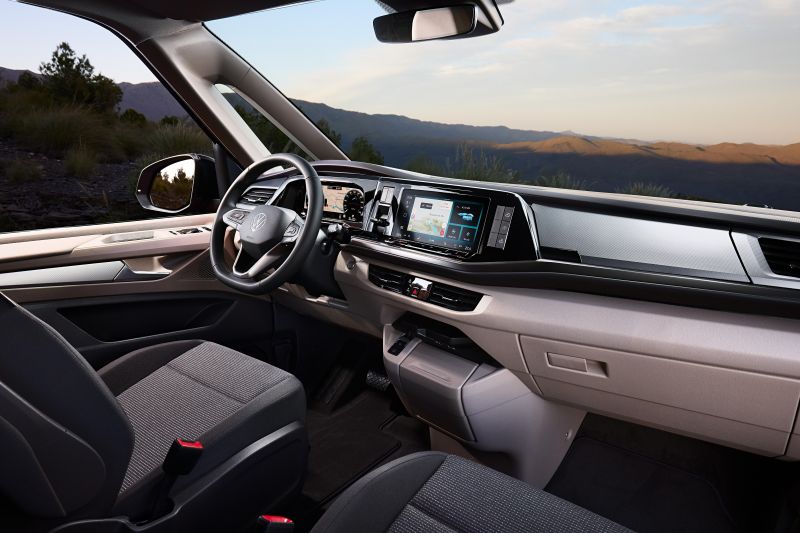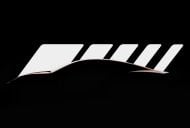The new-generation Volkswagen California camper van has been unveiled as the most car-like version of the nameplate – and it has been confirmed for an Australian launch.
Based on the long-wheelbase T7 Multivan, the latest Volkswagen California benefits from the MQB passenger car platform shared by models like the Golf, moving away from its traditional commercial vehicle underpinnings.
It’s also the first generation of California to offer plug-in hybrid (PHEV) power.
Volkswagen Australia has locked in the new California for a local launch, though it has yet to announce the lineup and when we can expect to see it in local showrooms.
Overseas, the California will be offered in five variants: Beach, Beach Tour, Beach Camper, Coast and Ocean.
Australia has traditionally only received the California Beach, but there’s no guarantee that the previous model structure will carry across into the new generation.
Measuring 5173mm in length, 1941mm wide (sans mirrors) and 1990mm tall on a 3124mm wheelbase, the new California is 269mm longer, 37mm wider and has 121mm more between its axles than its predecessor.
Standard across all grades are sliding doors on both sides of the camper van – a first in the model’s history, allowing owners to set up their awnings wherever they like – as well as a pop-up roof, giving extra space for taller occupants walking through its rear compartment.
Removable rear seats replace the bench seat of the outgoing model, while all seats feature drawers underneath them for additional storage.
The California Beach serves as the entry-level grade, equipped with a manual pop-up roof, six seats and a spring mattress measuring 2.05×1.14m – wider than a King Single and longer than a Super King.
Beach Tour variants gain rotating and height-adjustable front seats, just one additional seating row (comprising three seats), ergonomic folding chairs (stored in the tailgate), pop-up roof lighting and USB ports, sliding windows in the sliding doors and a 40Ah camper battery.
It also features a C-pillar-mounted 5.0-inch screen which displays the California’s fresh and waste water levels, interior lighting functions, battery status, fridge temperature and auxiliary heater settings. These functions can also be controlled via a smartphone app or the central infotainment screen.
A folding table and an additional 1.98×1.33m folding mattress is included in the California Beach Tour.
While both aforementioned California grades are classified as passenger vehicles, the Beach Camper, Coast and Ocean are camper vans.
In the case of the Beach Camper, this means the five-seater is equipped with a slide-out mini-kitchen – complete with single-ring gas cooker, cutlery drawer and additional storage space – plus a 230-volt power connector.
California Coast examples have just two rear seats, providing more space for a kitchenette – with cabinets, sink and single-ring gas cooker – a 28-litre fresh water tank, a second 40Ah camper battery, an additional 230-volt power socket and a 1.98×1.06m folding bed.
Volkswagen’s flagship California Ocean carries across the Coast’s equipment and adds Mélange Raven recycled material seat fabric with embroidered California lettering, heated front seats, an auxiliary air heater, and automatic air-conditioning.
A choice of three engines will be offered in Europe, with the 110kW and 360Nm 2.0-litre four-cylinder turbo-diesel set to power the Australian-delivered Multivan being joined by a 150kW/320Nm 2.0-litre turbo-petrol and a plug-in hybrid.
The plug-in hybrid mates a turbocharged 1.5-litre four-cylinder engine to an electric motor for a combined output of 180kW, with drive delivered to all four wheels – a first not only for the California but any Volkswagen model on the MQB platform.
Volkswagen says each of the engines are paired to dual-clutch automatic transmissions and drive the front wheels, apart from the all-wheel drive plug-in hybrid.
Pricing has yet to be revealed for Australia, but the outgoing T6.1 range is priced between $93,790 to $103,730 before on-road costs.
The more traditional Volkswagen T7 Multivan people mover is due here in the fourth quarter of 2024 (October to December).
MORE: VW locks in most car-like Multivan yet for Australia, details line-up












